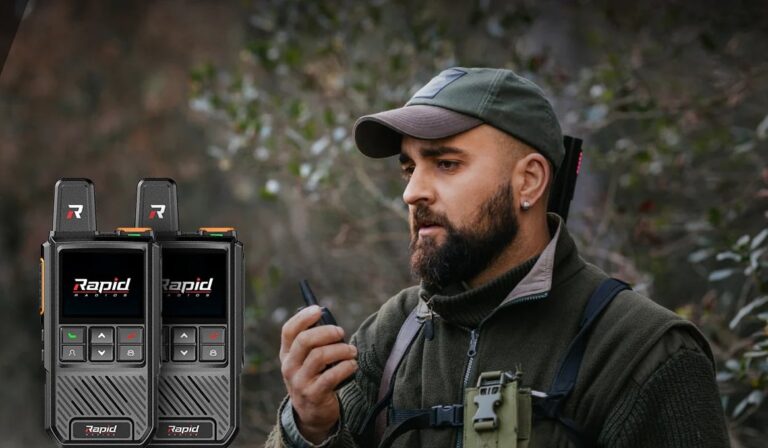The wrong person heard the right conversation.
That’s how data leaks start. Not with some dramatic hacking scene—but with a casual conversation over an unsecured channel. Whether you’re managing a security team, coordinating logistics, or handling sensitive information in the field, your communication is only as secure as the device you’re using.
So let’s talk about something that’s long overdue: the secure walkie-talkie—with AES-encrypted calls built in.
Because in 2025, your walkie-talkie should do more than just talk.
The Myth of “Private” Radio Channels
Think your standard walkie-talkie is secure because it uses a unique frequency? Think again.
Most traditional walkie-talkies operate on open channels. With the right scanner, bad actors can eavesdrop on everything from tactical planning to vendor pricing. And no, switching channels isn’t real protection—it’s radio hopscotch.
If your team is saying anything worth keeping private, then it needs encryption. Full stop.
Enter: AES Encryption (The Military Kind)
AES stands for Advanced Encryption Standard, and it’s no joke. It’s used by the U.S. government to protect classified information. When applied to voice communication, AES encryption scrambles your message into a secure code that can’t be deciphered without the correct key.
In plain English? Your conversation is gibberish to anyone not on your channel—with the right credentials.
This isn’t just fancy tech for the sake of it. It’s essential when you’re dealing with:
- Corporate operations
- Executive protection
- School or hospital security
- Private event staff
- Emergency response teams
And now, it’s available in a powerful, LTE-enabled walkie-talkie.
Secure. Smart. Still Built Like a Tank.
Let’s clear something up: this isn’t a fragile gadget pretending to be a radio.
Walkie-talkie is built for the field. It’s rugged, IP-rated, and ready to survive drops, rain, and long shifts in unpredictable environments.
But the real kicker? It uses nationwide LTE networks combined with AES-encrypted push-to-talk communication, giving you the best of both worlds:
- Global reach without repeaters
- Private channels without scanner vulnerabilities
- Instant voice transmission without audio lag
LTE Walkie-Talkie? That’s a Yes.
It’s time to ditch the old radio tower model.
This new breed of walkie-talkie uses LTE and 4G/5G networks to connect teams no matter where they are—city to city, state to state, even internationally (with roaming options). No more range limitations, dead zones, or “Can you hear me now?” moments.
And because it’s running on data networks, it supports:
- Voice encryption
- GPS tracking
- Text messaging
- Emergency alerts
- Remote device management
It’s not just secure—it’s smart.
Who’s This For? (Spoiler: Probably You)
You don’t have to run a covert ops unit to need encrypted communication. If you’re in any of these fields, secure voice is a necessity, not a luxury:
- Private security firms managing client confidentiality
- Schools and campuses safeguarding student privacy
- Event management teams dealing with crowd control or VIP logistics
- Utilities and infrastructure operators coordinating on critical systems
- Medical teams discussing patient care in real-time
If your team’s communication includes anything sensitive—or legally protected—you should be asking one question: Are we secure?
No Licenses. No Guesswork. Just Clarity.
Old-school radios often come with baggage: FCC licenses, interference issues, and the constant worry of “who else is listening?”
With this secure LTE walkie-talkie, you skip all that.
- No FCC licensing
- No tuning
- No spectrum drama
Just encrypted, crystal-clear, press-and-talk simplicity.
The Future of Push-to-Talk Is Private
Too many organizations are still treating communication as an afterthought—using unencrypted radios while investing heavily in firewalls and cybersecurity. That’s like locking the front door but leaving the window wide open.
If your team deserves secure messaging, why not secure voice?
Because privacy isn’t just a feature.
It’s a responsibility.
